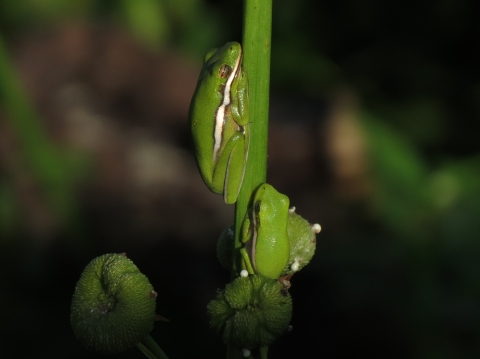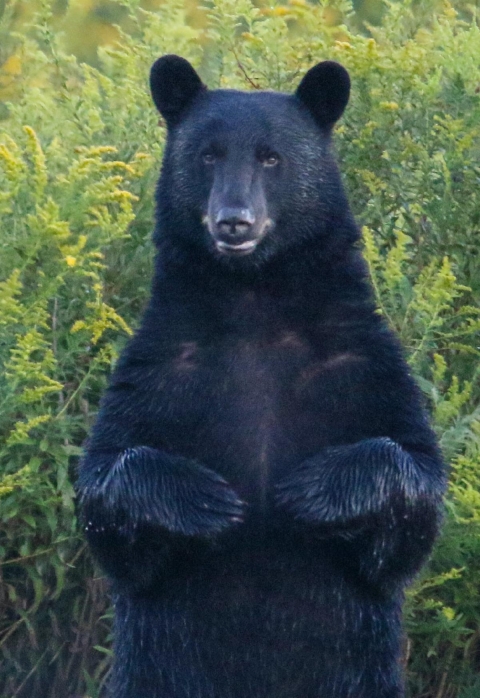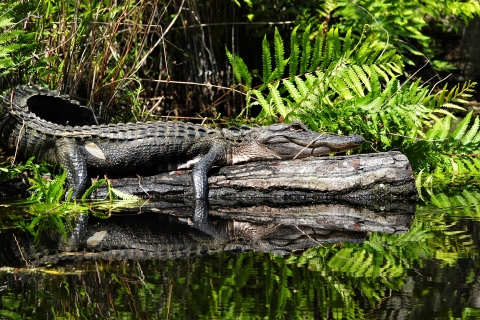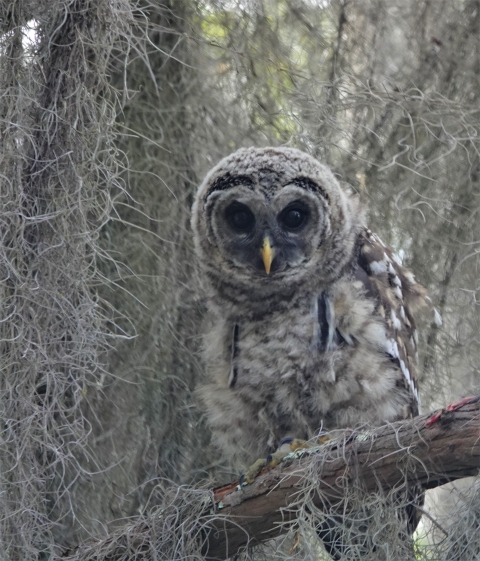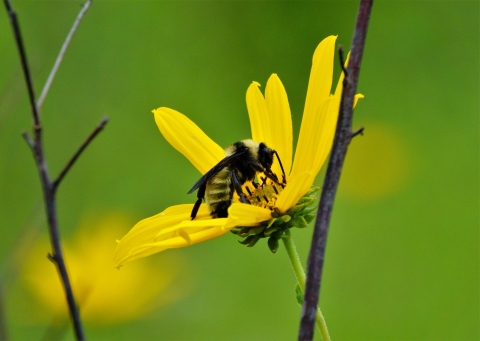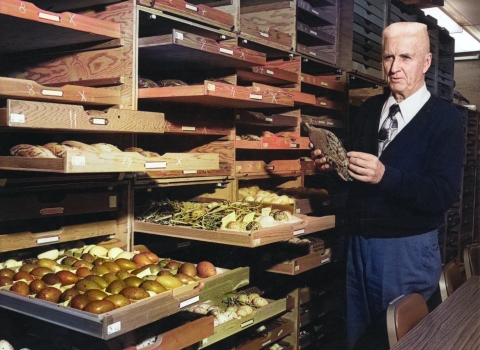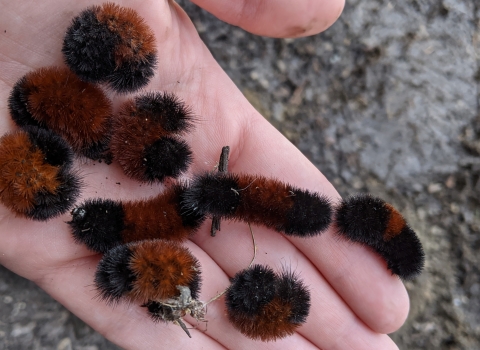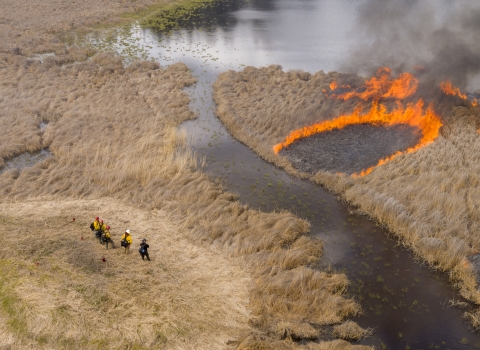The Okefenokee Swamp covers almost 700 square miles. Ten cities the size of Washington D.C. could fit inside the Okefenokee. It is one of the largest intact freshwater environments in the world and the largest blackwater swamp in North America.
Intricate watery canals cut through low sandy ridges. In spots, wet grassy peat batteries pop up through the dark water. Islands offer solid ground within this watery environment. Ancient tupelo and cypress tress covered with Spanish moss stand in prairies covered with water, making the swamp feel untouched by time.
Rare flowers float on the water and brilliant dragonflies dart from plant to plant.
Longleaf pine forests protectively surround the wetland.
The Ramsar Convention deemed the Okefenokee Swamp a Wetland of International Importance in 1971. The swamp’s amphibians are one reason the world looks to the Okefenokee.
Amphibians are bio-indicators of global health, which means that they are easily impacted by their environment, so we can gage the environmental health of the area by the health of the amphibians. Basically, when amphibians start to disappear, we know there is a serious environmental problem.
Amphibians are not the only animals that are important to the Okefenokee. The swamp is full of life.
5 animals you can see in the Okefenokee Swamp:
1. Black bear
Black bears are important to the environment because they spread seeds, even more than birds. They break up forest canopies and help decomposition, releasing nutrients that make the soil healthy.
Bears were once common all over Georgia. After the 18th century, they were in serious decline due to habitat loss, unrestricted hunting, and deterioration of their environment because of human development.
Conservationists took action to help the bears bounce back and now black bears have three stable populations in Georgia - the Okefenokee Swamp, the Southern Appalachians, and the Ocmulgee River drainage system.
While black bears are not typically aggressive, they deserve our respect, so here are some tips for living responsibly with bears.
2. Gopher Frog
Have you ever heard of a male attracting females with snores? If not, you don’t know the gopher frog. Their mating calls sound like a deep snore.
Gopher frogs are the rarest frogs in Georgia. They are only found in the longleaf pine forests in the Southeast. The longleaf forests once covered up to 92 million acres of the region, but now only three million acres of the native forests remains.
These delicate frogs are among the world-renowned amphibians in the Okefenokee. Also, gopher frogs eat billions of insects every year, which benefits people and agriculture in the area. They are a critical link in the food chain.
Gopher frogs are currently protected by the states where they live and are under review for protection under the Endangered Species Act.
3. American Alligator
American alligators are widely considered the “engineers” of wetlands. They thoroughly change their environment to make the most of changing water levels throughout the seasons, which keeps wetlands healthy.
For one, they dig holes called alligator ponds. This creates an environment for organisms and nutrients to move around. The holes also give other fish and animals a refuge when water levels are low. When maintaining their ponds, alligators move sediment and nutrients around, which keeps the soil healthy. The movements can also prevent large amounts bacteria and fungi from forming in the wetland.
There are about 15,000 alligators in the Okefenokee Swamp. No wonder it’s so healthy!.
4. Owls
Sounds of a parliament (a group of owls is a parliament thanks to C.S. Lewis’ meeting of owls in The Chronicles of Narnia) of owls calling will cut through the darkness of the Okefenokee, but you might have to look closely to see the owls. They are among the stealthiest of birds.
Owls are expert hunters, especially at night. Their wings are almost silent. They have impeccable night vision. Their tube-shaped eyes are like binoculars, which gives them amazing depth perception and the ability to fully focus on their prey. Many types of owls have asymmetrical ears that allows them to recognize sounds in multiple dimensions.
However, not all owls hoot. The eastern screech owl sounds more like a horse.
We depend on owls for many things, especially to control our rodent populations. By preying on rodents, they help prevent disease and minimize rodent damage to homes, crops and land.
Owls play a vital role in the ecosystem, but many owl species are decreasing in population due to a loss of habitat from increasing of development. Owls rely on forested areas to live and hunt. Removing these areas give them fewer options for nesting and it reduces their food supply.
5. Bumble Bees
Wild bees, like bumble bees, are in decline all over the U.S due to issues like habitat loss, competition from non-native bees, and pesticide use. The naturally lush Okefenokee landscape provides essential nectar that bees need to survive.
Bumble bees are exceptional pollinators because they vibrate to loosen hard-to-get pollen, in what’s called “buzz pollination.” Without pollinators, like the bumble bees, we wouldn’t have certain foods that we love, like blueberries. Also, bumble bees are the main insects that pollinate tomatoes. So, next time you have a delicious plate of spaghetti, thank a bumble bee.


